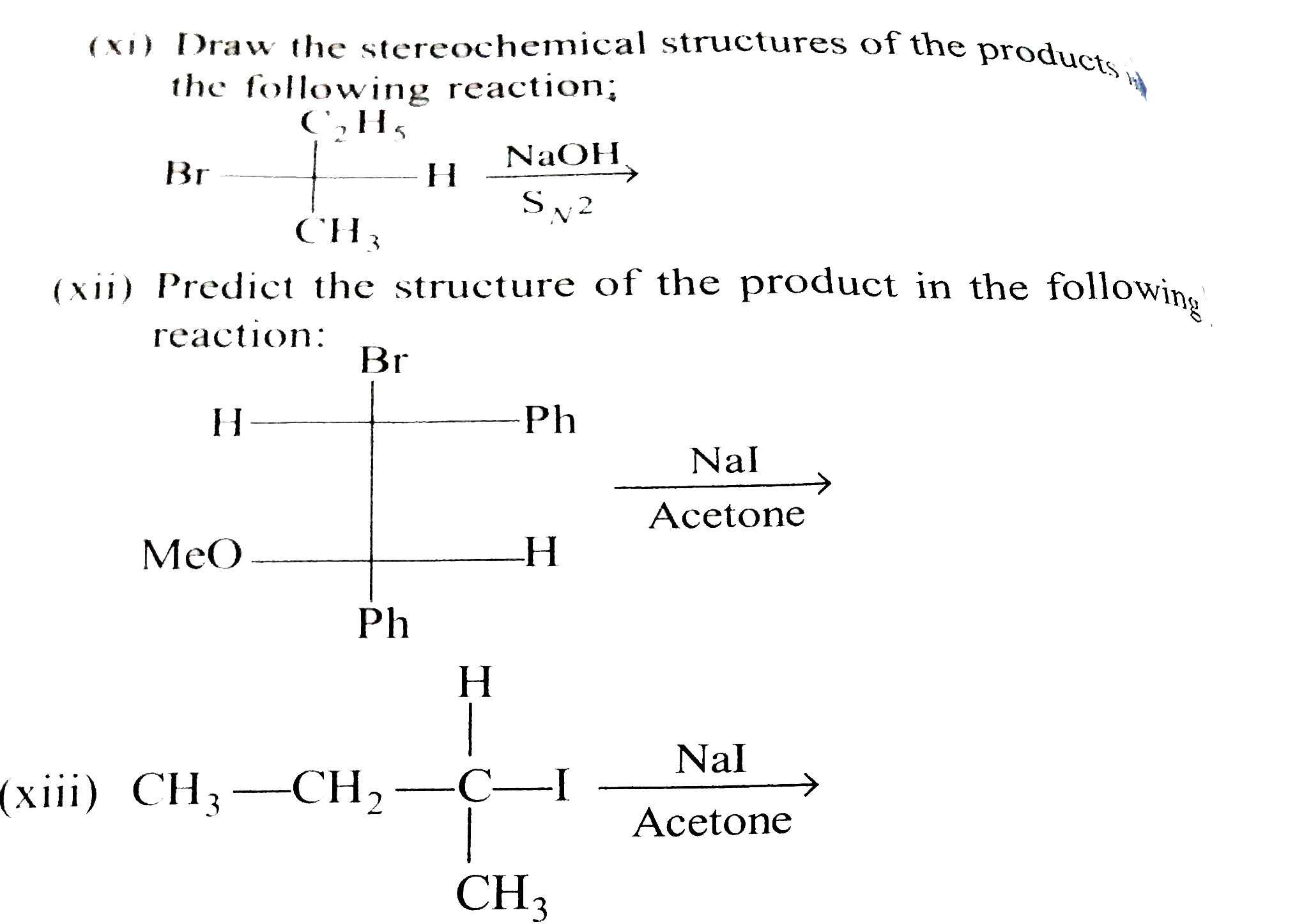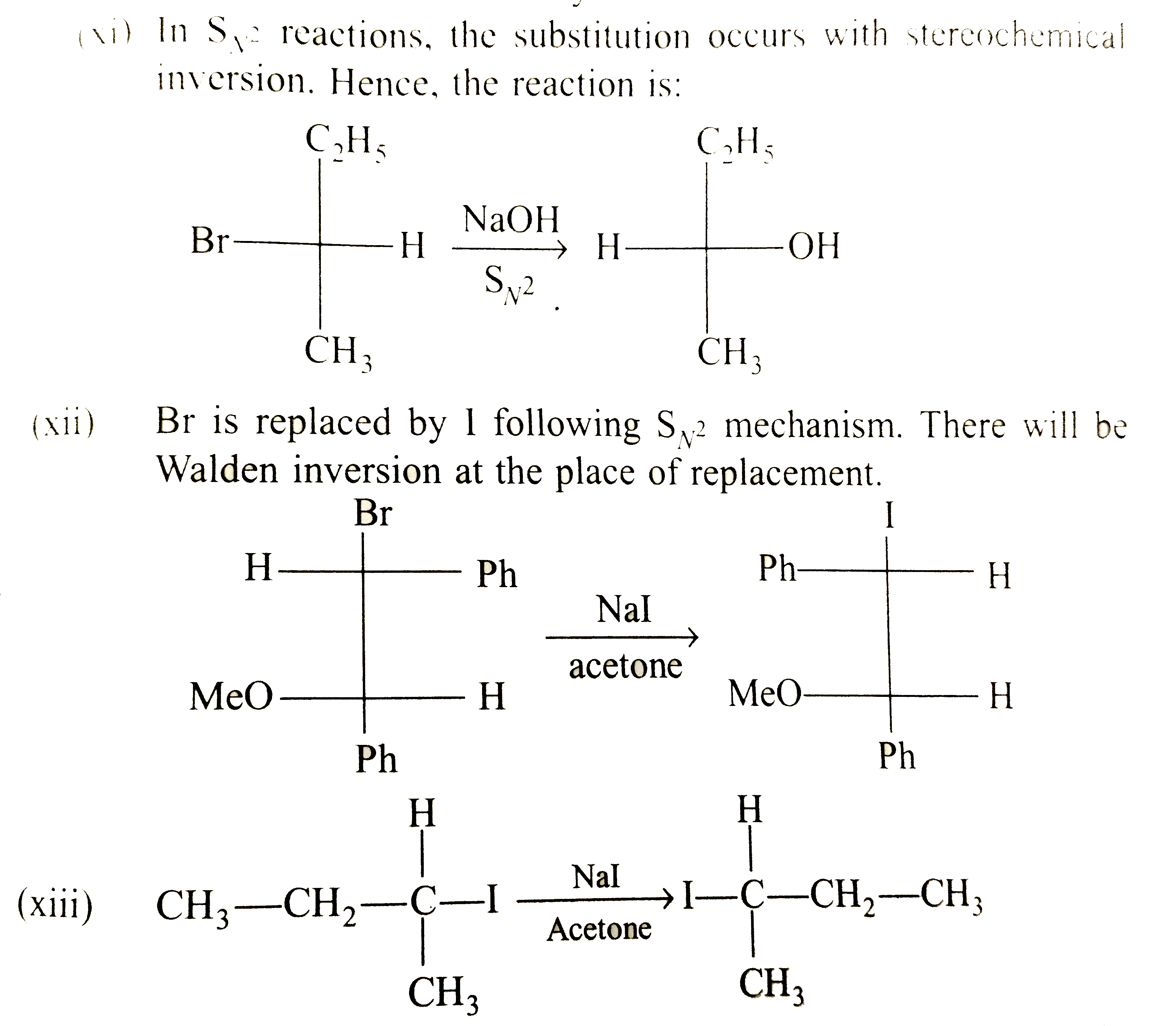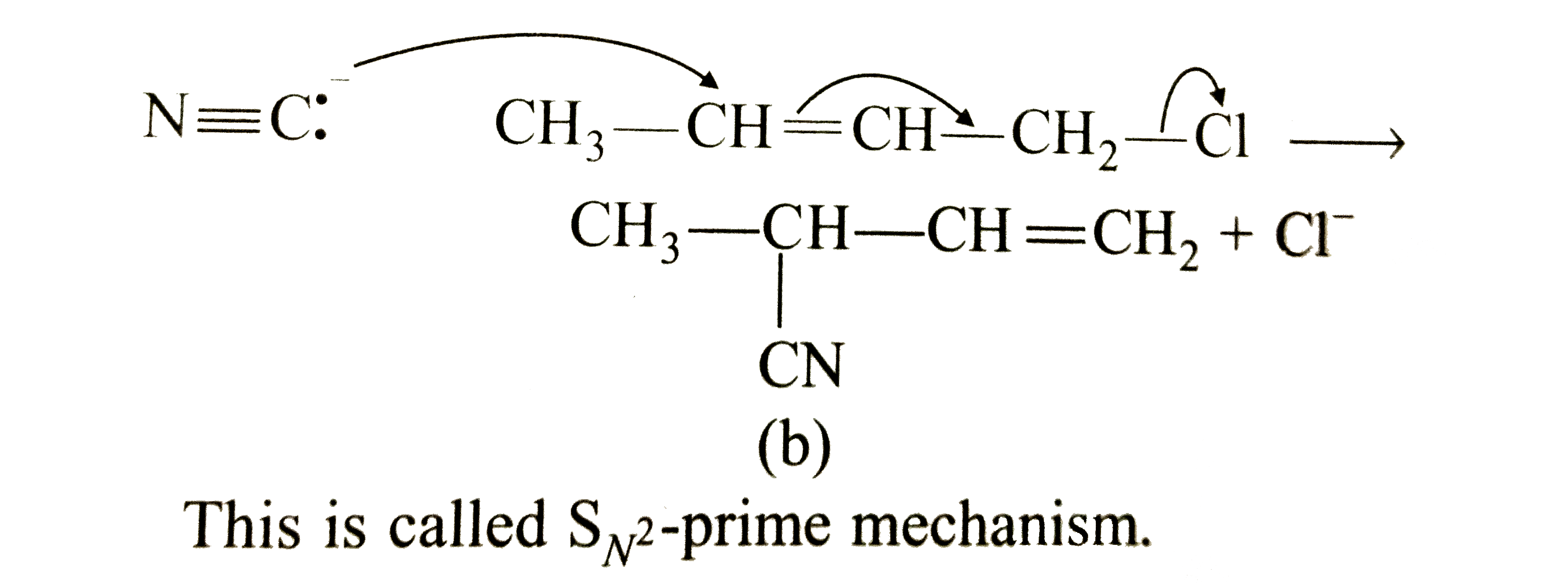Explain:
(i) Why trichloroacetic acid is stronger than acetic acid?
(ii) Why formic acid is stronger than butyric acid?
(iii) Why alkyl amines are stonger bases than ammonia?
(iv) Why benzyl carbocation is more stable than ethyl caebocation?
(v) What is the effect of introduction of an alkyl group or the stability of the carbocation?
(vi) Why allyl cation is more stabe than ethyl cation?
(vii) Why does tert-butyl chloride react with sodium hydroxide solution bt SN1 mechanism while n-butyl chloride react by SN2 mechanism?
(viii) In acylium ion, the structure R−C≡+O: is more stable than R−+C=O.
(ix) Why toluene reacts with bromine is presence of light gives benzyl bromide while in presence of FeBr3, it gives p-bromotoluene?
(x) Why aryl halides are less reactive than alkyl halides towards nucleophilic reagents?
(xi) Draw the stereochemical structures of the products in the following reaction:

(xvii) Predict the relative yields of the product of Me3CBr in 80% EtOH and 20%H2O.
Text Solution
(i) Due to −I effect of chlorine.
(ii) Alkyl group has a+I effect. Hence, butyric acid gives H+ with difficulty and therefore, weaker than formic acid.
(iii) Alkyl group increase electron dinsity on nitrogen due to +I effect and thus, the electron pair donating capacity of nitrogen increases.
(iv) Benzyl carbocation is more stable due to the presence of resonance.

(iv) Alkyl group is electron releasing group (+I effect). It partially neutralises the positive charge on carbon and thus, increases the stability of carbocation.
(vi) Allyl carbocation is more stable due to the presence of resonance.
H2C=CH−+CH2↔+CH2−CH=CH2
(vii) tert-Buty chloride reacts by SN1 mechanism because it forms stable carbocation. n-Butyl chloride reacts by SN2 mechanism as the reaction is non-ionic. Transition state is formed in which both OH and Cl are partically bonded to the halide carbon.
(viii) In R−C≡+O: the octet of every atom is complete while in R−+C=O, the carbon has only 6 electrons.
(ix) Side chain bromination of toluene to give benzyl bromide is favorured under photo-chemical irradiation and involves a free radical mechanism.
While in presence of FeBr3, electrophilic substitution in the benzene ring occurs and it forms p-bromo toluene.
(x) Aryl halides are less reactive and more stable than allkyl halides due to
(a) Resonance : In aryl halides, the delocalization of electron pair occurs and givs a partial double bond character to C−X bond making it stronger than C−X bond in alkyl halides.
(b) Difference in hybridization while in aryl halides it is sp2-hybridized. Therefore, the C−X bond length in aryl halides is shorter than alkyl halides.
(xi) In SN2 reactions, the substitution occurs with stereochemical inversion. Hence, the reaction is:

(xiv) :CF2 since, F and C are in the same period of the periodic table, their pAO's are about the same size permitting more efficient overlap. Furthermore, of the X−C bonds, the F−C bond length is the shortest.
(xv) Formation of product (a) is obtained from the expected SN2 reaction at C1. However, CN− can also to C3 with the nucleophile π−e's, displacing Cl− as the allylic rearrangement occurs.

|
Topper's Solved these Questions
- BASIC PRINCIPLES OF ORGANIC COMPOUNDS (MECHANISM OF ORGANIC REACTIONS)BOOK - OP TANDONCHAPTER - BASIC PRINCIPLES OF ORGANIC COMPOUNDS (MECHANISM OF ORGANIC REACTIONS)EXERCISE - BRAIN STORMING PROBLEMS
14 Videos
- BASIC PRINCIPLES OF ORGANIC COMPOUNDS (MECHANISM OF ORGANIC REACTIONS)BOOK - OP TANDONCHAPTER - BASIC PRINCIPLES OF ORGANIC COMPOUNDS (MECHANISM OF ORGANIC REACTIONS)EXERCISE - OBJECTIVE QUESTIONS (Level-A)
193 Videos
- BASIC PRINCIPLES OF ORGANIC COMPOUNDS (MECHANISM OF ORGANIC REACTIONS)BOOK - OP TANDONCHAPTER - BASIC PRINCIPLES OF ORGANIC COMPOUNDS (MECHANISM OF ORGANIC REACTIONS)EXERCISE - ILLUSTRATIONS OF OBJECTIVE QUESTIONS
20 Videos
- BASIC PRINCIPLESBOOK - OP TANDONCHAPTER - BASIC PRINCIPLESEXERCISE - SECTION V INTEGER ANSWER TYPE QUESTION
3 Videos
- CARBOXYLIC ACIDS AND THEIR DERIVATIVESBOOK - OP TANDONCHAPTER - CARBOXYLIC ACIDS AND THEIR DERIVATIVESEXERCISE - Integer
4 Videos
Similar Questions
Why is trichloroacetic acid stronger acid than acetic acid?
View SolutionWhy is trichloroacetic acid stronger acid than acetic acid?
View SolutionWhy is ethyl amine a stronger base than ammonia?
View SolutionWhy is ethyl amine a stronger base than ammonia?
View SolutionBenzyl carbocation is more stable than ethyl carbocation. Justify.
View SolutionBenzyl carbocation is more stable than ethyl carbocation. Justify.
View SolutionWhy oxalic acid is a stronger acid than acetic acid?
View SolutionWhy is dichloroacetic acid stronger than monochloroacetic acid ?
View SolutionWhy is benzoic acid a stronger acid than acetic acid ?
View Solution(b) Explain why chloroacetic acid is a stronger acid than acetic acid.
View Solution
